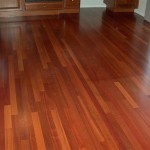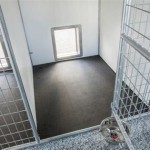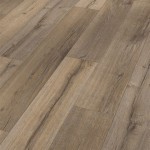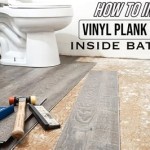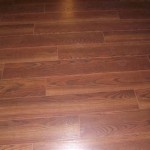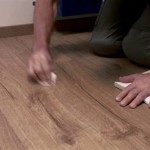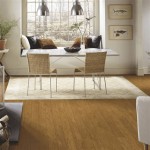Essential Aspects of Prefinished Wood Flooring Gap Filler: Silicone or Latex
When it comes to achieving a seamless and polished look for your prefinished wood flooring, gap fillers play a crucial role. The gaps between planks not only detract from the overall aesthetics but can also compromise the integrity of the floor over time. Choosing the right gap filler is essential to ensure a durable and visually appealing finish.
Two primary options for gap fillers are silicone and latex-based products. Each material offers unique advantages and disadvantages, making it important to understand their properties before making a decision.
Silicone Gap Fillers
Advantages:
- Waterproof: Silicone is naturally waterproof, making it an excellent choice for areas prone to moisture, such as kitchens, bathrooms, and mudrooms.
- Flexible: Silicone's flexibility allows it to accommodate expansion and contraction of the wood, preventing gaps from reappearing over time.
- Durable: Silicone gap fillers are highly durable and resistant to cracking or fading, extending the lifespan of the floor.
Disadvantages:
- Difficult to Remove: Silicone is notoriously difficult to remove if you need to make repairs or replace planks in the future.
- May Yellow: Clear silicone can yellow slightly over time, especially in areas exposed to direct sunlight.
Latex Gap Fillers
Advantages:
- Easy to Apply: Latex gap fillers are water-based, making them easy to apply and clean up.
- Paintable: Latex can be painted to match the color of the wood, allowing for a seamless blend.
- Less Expensive: Latex gap fillers are generally more affordable than silicone options.
Disadvantages:
- Less Waterproof: While latex is water-resistant, it may not be suitable for areas with excessive moisture.
- Less Durable: Latex gap fillers are less durable than silicone and may require more frequent reapplication.
Choosing the Right Gap Filler
The choice between silicone and latex gap fillers for prefinished wood flooring depends on the specific requirements of your project.
- For areas exposed to moisture or with wide gaps, silicone is the preferred choice due to its waterproof and flexible properties.
- For cost-effective and easy-to-apply solutions, latex is a suitable option in areas with less moisture.
- If paintability is crucial, latex allows for seamless color matching with the wood.
Proper Application
To ensure optimal performance, it's important to follow the instructions for gap filler application carefully.
- Clean the gaps thoroughly to remove any dust or debris.
- Apply the gap filler evenly using a caulking gun or trowel.
- Smooth the gap filler using a putty knife or damp sponge.
- Allow the gap filler to cure completely before walking on the floor.
By selecting the appropriate gap filler and applying it properly, you can effectively seal gaps in your prefinished wood flooring, enhancing its longevity and aesthetic appeal.

Tips From Wood Floor Pros How To Fill Gaps In Your Hardwood Floors Artisan Llc
When Filling A Gap With Grout Between Wood Floor Boards And Stone Hearth Do I Need An Expansion If So What Can Abut The All Straight Edge

Roberts 3 Oz Dark Brown Wood Laminate And Vinyl Putty Pc7732 The Home Depot

How To Fill In The Gaps Between Wood Plank Walls Quora

Roberts 3 Oz Gray Wood Laminate And Vinyl Putty Pc7728 The Home Depot

How To Fill In Gaps Between Hardwood Flooring With Wood Filler

Tips From Wood Floor Pros How To Fill Gaps In Your Hardwood Floors Artisan Llc
How To Use Silicone Sealant Prevent Pests Bondzil

Roberts 3 Oz Brown Wood Laminate And Vinyl Putty Pc7725 The Home Depot

When You Should Caulk Between The Base And Wood Floor Hd 1080p
Related Posts

